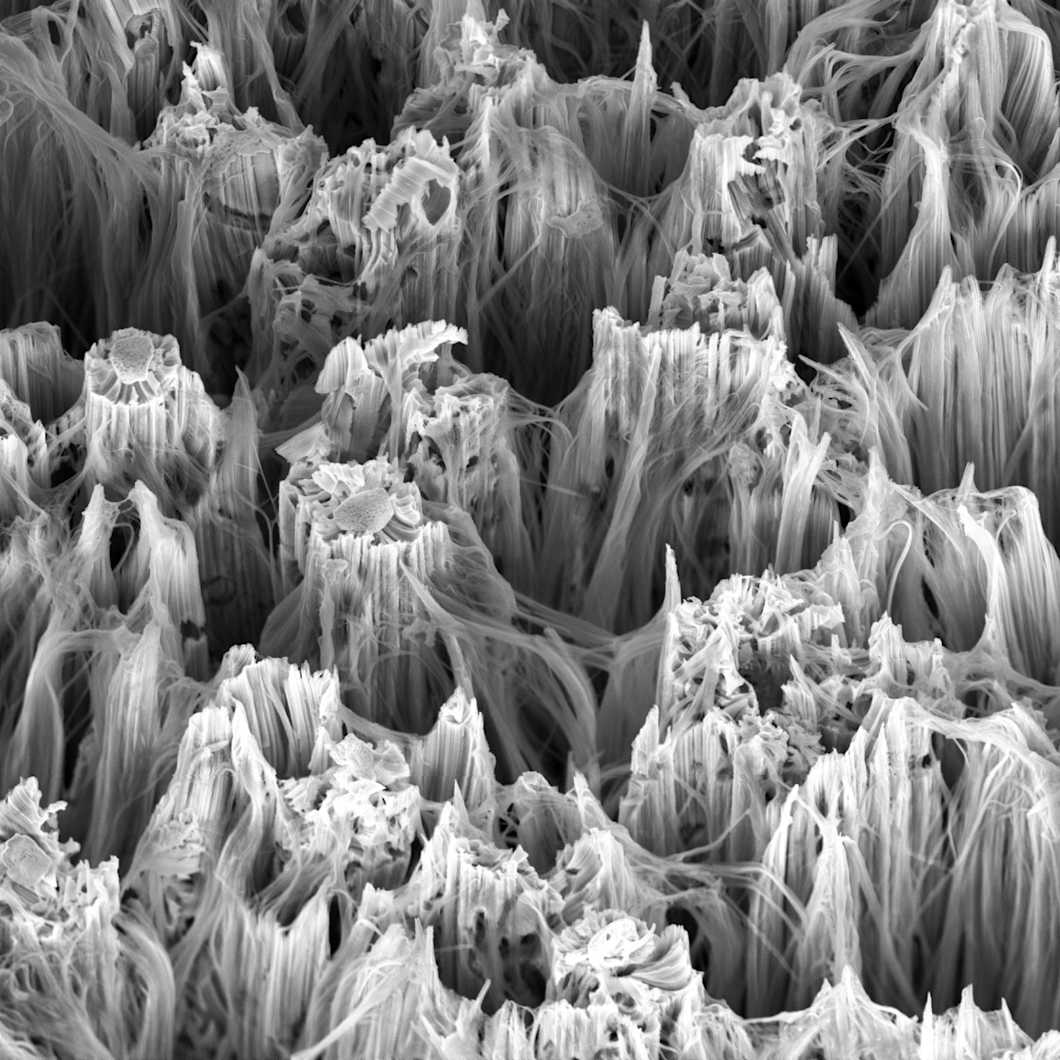Electron energy loss spectroscopy
Electron energy loss spectroscopy (EELS) is a spectroscopic technique that can be combined with TEM or STEM to gather chemical and elemental data during electron microscopy analysis. EELS has a wide range of applications in the research and development of new materials and technologies.

What is EELS analysis used for?
EELS is often used in tandem with electron microscopy techniques, such as transmission electron microscopy (TEM) and scanning transmission electron microscopy (STEM) to help gather additional data. It can be used to investigate various qualities of thin film samples, including detecting the atoms present, their quantities, the nature of their chemical bonding, oxidation states, and even their allotropic forms. This makes EELS useful across a range of industries for analyzing chemical fingerprints and creating spatial maps of new materials during their development.
EELS also provides information on the electronic properties of materials and can therefore be used to characterize semiconductors and other electronically active materials that form the backbone of a wide range of current and future technologies. EELS can operate on a sub-microscopic scale and therefore finds applications in the development of new nanotechnology.
How does electron energy loss spectroscopy work?
In EELS, a fine beam of electrons with known kinetic energy is fired toward a sample. The electrons interact with the atoms in the sample in a variety of ways, including causing the electrons inside the atoms to shift to different energy levels or become removed entirely. This process causes the incident electrons to lose some kinetic energy and become scattered. The scattered electrons are then detected by a spectrometer, which measures the remaining energy that they carry.
The amount of energy lost can then be calculated, which will be specific to the event it caused and the type of atom it interacted with. This will reveal information about the nature of the interaction and, therefore, which atoms are present, where they are located, and in what quantities they exist. It also provides information about how they are bonded and what other atoms are nearby. By repeating this process, EELS makes it possible to create a map of the different elements in the sample.
Suitable samples and sample preparation
Samples for EELS are most often in the form of extremely thin films (below 100 nm or even 50 nm). Therefore, they must be deposited as a thin film, or suitably thinned from a bulk sample. Repeated thinning steps with methods like the focused ion beam (FIB) may be required to achieve the desired thickness. Damage and contamination to the surface should be minimized to reduce the impact on the final results.
EELS vs. EDX
Energy-dispersive X-ray spectroscopy (EDX) is another spectroscopic elemental analysis technique that is used similarly to EELS, usually in connection with either SEM or TEM. Generally, EDX works best when used to identify relatively heavy elements. It is also easy to use and generally more time and cost-effective when compared to EELS, making it a more common ‘workhorse’ technique.
However, EELS can provide additional information about the sample's structure, chemical bonding, electronic properties, and surface features. It can also readily record data for lighter elements that may not appear in EDX analysis. In some cases, EELS can even be used to differentiate between different isotopes of the same element, such as carbon, which gives it an edge in both organic and inorganic analysis.
Need EELS analyses?
Measurlabs offers laboratory testing with EELS and complementary methods for a wide range of materials. We process even large sample batches efficiently, delivering results within agreed timelines. Our experts are available to assist with every step, from method selection to result interpretation. Use the form below to request a quote, and we will get back to you by the next business day.
Suitable sample matrices
- Semiconductors
- Thin films
- Carbon-based materials
- Polymers
- Nanomaterials
Ideal uses of EELS analysis
- Elemental analysis
- Surface mapping
- Monitoring different allotropes of carbon
- Detecting impurities
- Determining bond characteristics
Ask for an offer
Fill in the form, and we'll reply in one business day.
Have questions or need help? Email us at info@measurlabs.com or call our sales team.
Frequently asked questions
EELS is most often used to complement TEM or STEM analysis with elemental composition information on nanoscale samples.
EELS generally requires an electron-transparent sample, the preparation of which may be tricky. When compared with EDX, elemental analysis with EELS is also less widely available and usually more expensive.
Measurlabs offers a variety of laboratory analyses for product developers and quality managers. We perform some of the analyses in our own lab, but mostly we outsource them to carefully selected partner laboratories. This way we can send each sample to the lab that is best suited for the purpose, and offer high-quality analyses with more than a thousand different methods to our clients.
When you contact us through our contact form or by email, one of our specialists will take ownership of your case and answer your query. You get an offer with all the necessary details about the analysis, and can send your samples to the indicated address. We will then take care of sending your samples to the correct laboratories and write a clear report on the results for you.
Samples are usually delivered to our laboratory via courier. Contact us for further details before sending samples.